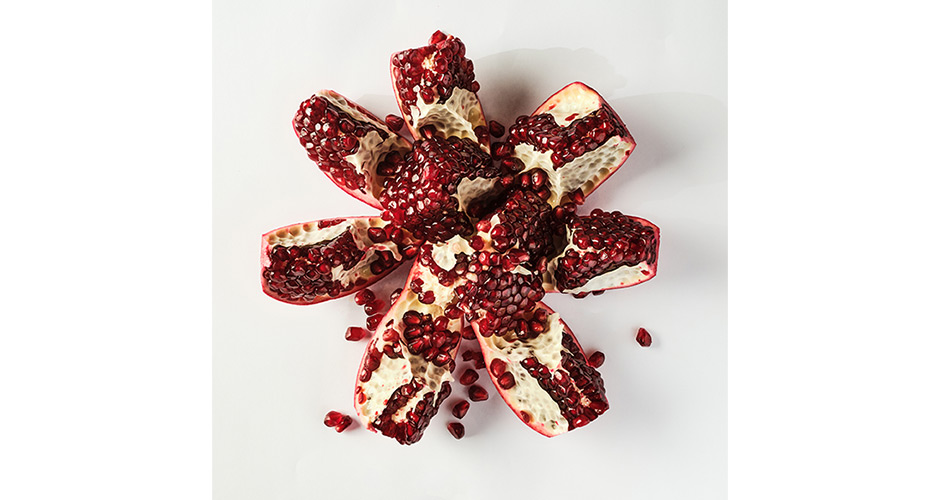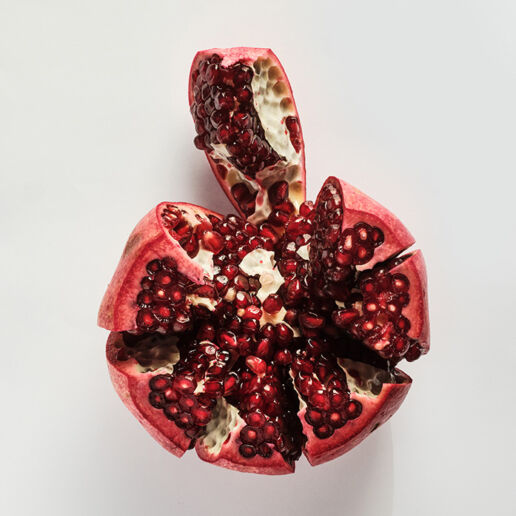BLESSED YEARS
A sense of rejuvenation came upon me as I sipped at my pomegranate juice. I thoroughly enjoyed nibbling at a pomegranate in front of the TV in the evening. I prayed and daydreamed as we broke open pomegranates in the garden with the entire family. Out shopping at the greengrocer with my daughter, the complimentary pomegranate juice added color to our experience, and what a radiant streak it was. A smart box full of pomegranates arrived at the office just as I was typing this piece. I guess there was some kind of Instagram photoshoot taking place downstairs.

But what is this fruit we call pomegranate? Where does it come from and how does it grow? What are the tricks of choosing the best ones? And, above all, why does it symbolize prosperity?
Punica granatum is a shrub in the family Lythraceae which grows well in temperate climates. The fruit contains hundreds of seeds surrounded by arils which can range from mildly-sour to sweet in taste.
Pomegranate shrubs are not very picky, they grow in a broad range of climates and soil types. Warmth and plenty of sunshine propagate healthy growth.
Color is the key to choosing the best pomegranates. Radiant red is the one to go for. A prize pomegranate will be round, plump and substantial in weight.
Pomegranates have been used for medicinal purposes across the Middle East and Ancient Greece for centuries. The fruit also bears symbolic meanings in numerous beliefs and religions. Buddhists regard the pomegranate as the essence of the positive aspects of all life and believe that homes adorned with pomegranate figures will protect its inhabitants and grant prosperity. The tradition of cracking pomegranates is still practiced today in the hope of spreading prosperity.
Blessed Years!


